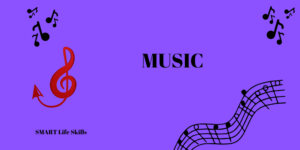Effective communication lies at the heart of all successful professional interactions. Among the many communication competencies, listening skills stand out as one of the most vital yet frequently underestimated abilities. In the professional context, good listening fosters mutual respect, enhances understanding, and enables the development of stronger interpersonal and organisational relationships (Adler, Rosenfeld & Proctor, 2018). The art of listening is not merely about hearing words but involves the active process of interpreting, understanding, and responding appropriately to messages. This essay explores key strategies to enhance listening skills in professional environments, drawing upon academic research, psychological principles, and workplace communication practices.
1.0 Give Full Attention
The foundation of effective listening lies in giving undivided attention to the speaker. In professional communication, distractions can lead to misunderstandings and misinterpretations, ultimately undermining trust and productivity. According to Brownell (2012), active attention requires both cognitive concentration and emotional presence, meaning listeners must engage both mentally and emotionally with the speaker’s message. For instance, during a team meeting, a manager who listens attentively demonstrates respect for the team’s input, fostering a sense of inclusion and collaboration. Techniques such as maintaining an open posture, putting aside mobile devices, and eliminating multitasking can significantly improve attentiveness.
2.0 Maintain Eye Contact
Eye contact serves as one of the most powerful nonverbal communication signals in professional interactions. It conveys interest, respect, and sincerity (Knapp, Hall & Horgan, 2014). Maintaining eye contact does not only facilitate a connection between the speaker and listener but also helps to decode emotional cues and nonverbal subtleties. In Western cultures, for example, maintaining eye contact is often associated with confidence and credibility, whereas avoiding it may be perceived as disinterest or evasiveness. However, cultural sensitivity is essential, as norms surrounding eye contact vary globally (Gudykunst & Ting-Toomey, 2022). Therefore, professionals must balance attentiveness with cultural appropriateness to ensure effective engagement.
3.0 Avoid Interrupting
Interrupting a speaker disrupts the flow of communication and may signal impatience or lack of respect. In professional dialogue, interruptions can derail discussions and create defensive responses, reducing the effectiveness of the interaction (Rogers & Farson, 2015). According to Nichols and Stevens (1957), true listening involves allowing silence and pausing thoughtfully before responding. For instance, in a counselling session or performance review, a professional who refrains from interrupting provides the speaker with the psychological safety to express themselves openly. Practising restraint allows listeners to capture the full meaning of the speaker’s message before forming judgments.
4.0 Practice Active Listening
Active listening is the deliberate process of understanding and interpreting messages by providing verbal and nonverbal feedback. It involves paraphrasing, summarising, and reflecting on what the speaker has said to confirm understanding. Carl Rogers, a pioneer of humanistic psychology, described active listening as essential to empathic communication, helping build mutual trust and psychological safety (Rogers & Farson, 2015). For example, a project manager might say, “So, you’re suggesting we need to allocate more time for testing?”—a reflective statement that validates understanding and encourages further elaboration. This strategy not only clarifies meaning but also reinforces engagement and rapport.
5.0 Ask Clarifying Questions
Asking clarifying questions is an essential component of effective listening, particularly in professional settings that involve complex information or decision-making. According to Adler et al. (2018), clarification helps prevent miscommunication and encourages precision. For instance, in healthcare, when a nurse seeks clarification from a doctor about a treatment plan, it ensures patient safety and accurate implementation. Effective clarifying questions begin with phrases like “Could you elaborate on…?” or “What do you mean by…?”. This demonstrates attentiveness and a willingness to understand, thereby strengthening professional relationships and collaborative outcomes.
6.0 Be Empathetic
Empathy lies at the core of interpersonal listening and relationship building. Being empathetic requires putting oneself in the speaker’s position to understand their emotions, perspectives, and motivations (Goleman, 2018). In professional contexts, empathy enhances emotional intelligence and supports effective teamwork. For instance, when employees face workplace stress, managers who listen empathetically can provide meaningful support and foster trust. Empathetic listening not only improves morale but also enhances problem-solving and conflict resolution. Research by Davis (2018) confirms that empathetic listening promotes psychological safety, leading to higher organisational engagement and reduced turnover.
7.0 Minimise Distractions
In today’s technology-driven workplaces, distractions such as emails, notifications, and multitasking pose significant barriers to effective listening. Research shows that multitasking reduces comprehension and retention of information (Kraus, 2017). Therefore, creating a focused listening environment is essential. This might involve silencing phones, closing irrelevant applications, or conducting important discussions in quiet, private spaces. In virtual meetings, using headphones and maintaining a clear background can enhance attentiveness and minimise external interference. Mindful control of environmental and digital distractions helps ensure communication remains purposeful and respectful.
8.0 Show Nonverbal Cues
Nonverbal cues such as nodding, smiling, and appropriate gestures can reinforce understanding and show attentiveness. Mehrabian’s (1972) communication model emphasised that nonverbal behaviour constitutes a significant proportion of perceived communication effectiveness. For example, subtle gestures like leaning forward or mirroring the speaker’s tone convey empathy and engagement. However, excessive or incongruent gestures may appear insincere. Therefore, professionals should be mindful of aligning verbal and nonverbal signals to maintain authenticity. Consistent nonverbal communication strengthens relational bonds and supports an atmosphere of mutual respect.
9.0 Practice Mindfulness
Mindfulness in listening involves being fully present in the moment, with heightened awareness of one’s thoughts, feelings, and surroundings. Kabat-Zinn (2013) defines mindfulness as “paying attention in a particular way: on purpose, in the present moment, and non-judgmentally.” Applying mindfulness to listening helps reduce distractions and promotes deeper comprehension. For instance, before engaging in a performance review or client consultation, taking a few deep breaths can enhance focus and emotional regulation. Studies suggest that mindful listening leads to improved empathy and workplace collaboration (Good et al., 2016). It encourages the listener to engage without bias or preconception, ensuring more authentic communication.
10.0 Reflect on Your Listening Habits
Self-awareness is key to continuous improvement. Reflecting on one’s listening habits helps identify strengths and areas for development. Gibbs’ Reflective Cycle (1988) provides a useful framework for evaluating past interactions and implementing changes for future improvement. Seeking feedback from colleagues or supervisors can offer valuable external perspectives. For example, if team members frequently repeat themselves, it might indicate inattentiveness or misunderstanding. By embracing feedback and reflection, professionals can cultivate adaptive listening strategies that align with evolving communication demands.
In summary, listening skills form the cornerstone of effective professional communication and relationship-building. From giving full attention and maintaining eye contact to practising active listening and mindfulness, each strategy contributes uniquely to the listener’s ability to engage meaningfully with others. As organisations become increasingly diverse and interconnected, the importance of empathetic and mindful listening continues to grow. By applying these principles intentionally, professionals not only enhance their communicative competence but also foster trust, collaboration, and mutual understanding—the foundations of strong and lasting professional relationships.
References
Adler, R., Rosenfeld, L. and Proctor, R. (2018) Interplay: The Process of Interpersonal Communication. 14th edn. Oxford: Oxford University Press.
Brownell, J. (2012) Listening: Attitudes, Principles, and Skills. 5th edn. Boston: Pearson Education.
Davis, M. H. (2018) Empathy: A Social Psychological Approach. New York: Routledge.
Gibbs, G. (1988) Learning by Doing: A Guide to Teaching and Learning Methods. Oxford: Oxford Polytechnic.
Goleman, D. (2018) Emotional Intelligence: Why It Can Matter More Than IQ. London: Bloomsbury.
Good, D. J., Lyddy, C. J. and Glomb, T. M. (2016) ‘Mindfulness at work: A new approach to improving individual and organisational performance’, Academy of Management Perspectives, 30(2), pp. 116–131.
Gudykunst, W. B. and Ting-Toomey, S. (2022) Culture and Interpersonal Communication. 3rd edn. London: Routledge.
Kabat-Zinn, J. (2013) Full Catastrophe Living: Using the Wisdom of Your Body and Mind to Face Stress, Pain, and Illness. New York: Random House.
Knapp, M. L., Hall, J. A. and Horgan, T. G. (2014) Nonverbal Communication in Human Interaction. 8th edn. Boston: Cengage Learning.
Kraus, N. (2017) ‘The neurobiology of listening’, Trends in Cognitive Sciences, 21(10), pp. 798–810.
Mehrabian, A. (1972) Nonverbal Communication. Chicago: Aldine-Atherton.
Nichols, R. G. and Stevens, L. A. (1957) Are You Listening? New York: McGraw-Hill.
Rogers, C. R. and Farson, R. E. (2015) Active Listening. Chicago: Industrial Relations Center, University of Chicago.









